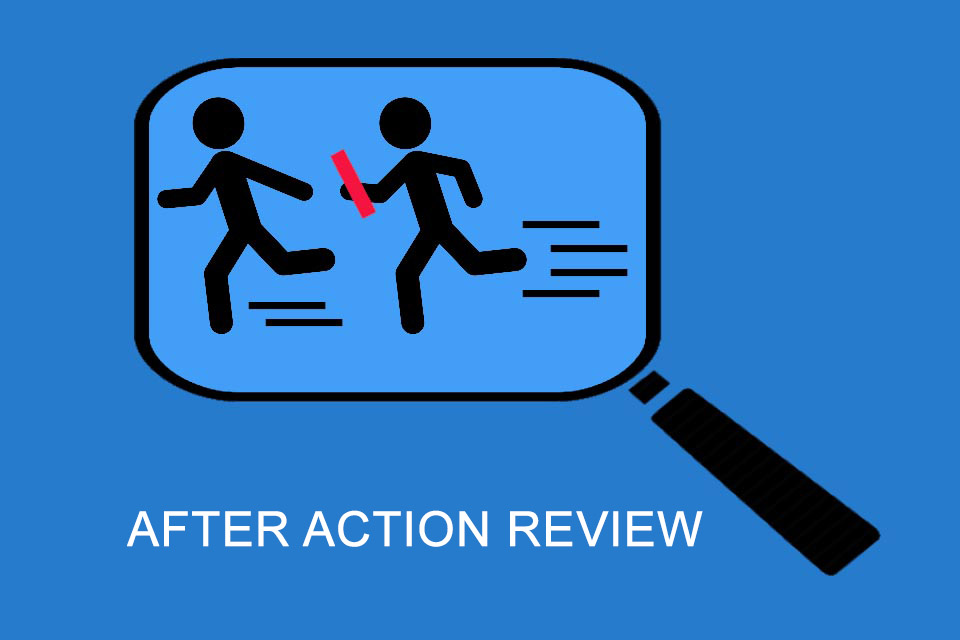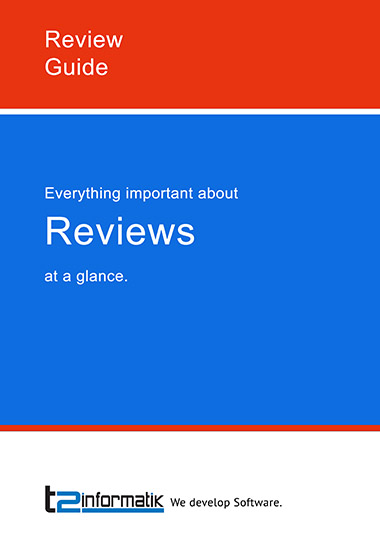What is an After Action Review?
Smartpedia: An After Action Review is an immediate exchange of experiences after the implementation of an action with the aim of learning from it.
After Action Review – after the action is before the action
“Action” and “Cut” are probably the two most common terms a director shouts when shooting a film. “Action” is the command that starts the recording of the acting, “Cut” is the command to end the recording. What follows is, figuratively speaking, a direct After Action Review: the joint discussion of the crew with the actors about what happened, what met expectations and what should be better next time.
Simply put, an After Action Review is an exchange of participants after an action with the aim of reflecting on this action in order to carry out future actions even “better”.
The origin of the After Action Review
The After Action Review – often abbreviated to simply AAR – did not originate in the film industry, but in the military. The US military is often cited as the inventor and the U.S. Army’s Opposing Force OPFOR as the user of the format.¹ Irrespective of the fact that there are also reports that other armies have already used corresponding formats, the German translation Einsatznachbesprechung seems appropriate. A Einsatznachbesprechung is basically a debriefing. And debriefings take place in many areas where operations literally take place, e.g. with the police and fire brigade, with emergency doctors, the Federal Agency for Technical Relief (THW) or with intervention forces.
The Use of After Action Reviews in Companies
Interestingly, nowadays many companies in business and industry conduct After Action Reviews, often using alternative terms such as Postmortem Review, After Event Review, Post Action Review, After Activity Review or After Action Report.
This is particularly interesting because in practice companies are very likely to deviate from the origins of military application. The US Headquarters of the Army describes the AAR as follows: “It is a tool leaders and units can use to get maximum benefit from every mission or task. It provides
- dandid insights into specific soldier, leader, and unit strengths and weaknesses from various perspectives.
- feedback and insight critical to battle-focused training.
- details often lacking in evaluation reports alone.²
Discussing the specific strengths and weaknesses of individual team members in the community is likely to go too far for many team members in a company. What works well in companies, however, are the four phases of the AAR.
Phases of the After Action Review
The After Action Review defines four phases:
- Planning
- Preparing
- Conducting
- Following-up
In planning, participants discuss the plan, objectives, assumptions and expectations that preceded the action. The discussion of the goal is particularly important, because without a goal the action – or the event, the project phase, the project, etc. – cannot be adequately evaluated or possible deviations evaluated. – cannot be adequately evaluated or possible deviations analysed. In this respect, the AAR is similar to a sprint review, for example, as used in Scrum. In a sprint review at the end of a sprint, the completed work is assessed in relation to the set sprint goal. The central question in Planning is: “What was planned?”.
In Preparing, the circumstances of the action are gathered. The focus is on the actual action and the corresponding reconstruction. The more comprehensive the action was, the more important the identification of key elements becomes. The central question in preparing is: “What really happened?”.
In Conducting, the action is evaluated from different perspectives. In this phase, the involvement of all participants, the open and honest exchange among each other, as well as the willingness to discuss different interpretations and evaluations are important. In practice, the use of a moderator is recommended in order to counteract the HIPPO effect, for example, to carry out the comparison between plan and reality in a focused way and to discuss the causes of possible deviations. The central question during the implementation is: “Why did it happen?”.
The last phase is the following-up. Here it is a question of linking the causes of successes and failures with recommendations for action. As lessons learned or good practices, they ideally form the basis for future actions. The central question in the following-up is: “What can we do?”.
Tips for the After Action Review
There are a number of tips for conducting an After Action Review in companies:
- Clearly communicate the purpose and rules. The purpose is to learn together from an action. It is about potentials rather than mistakes, about opportunities rather than criticism. The rules address both the process, the form of exchange and the active participation of all those involved.
- The use of an experienced facilitator. A facilitator is often very important for an open, honest and goal-oriented review. The prerequisite for this is his neutrality and the acceptance of those involved.
- The swift After Action Review. Ideally, this should take place soon after an action, because the insights of those involved are still fresh and the experiences can be used for similar actions in the relatively short term. Here are two major differences to a classic project review, which is usually only carried out after a project has been completed: the project review only unfolds its effect in a subsequent project and not in the current project. And the amount of insights and experiences could be so large that it becomes difficult to identify all the important lessons learned.
In principle, an After Action Review can be conducted after any “action”: after implementing code, designing an advertisement, optimising a website, etc. Like many similar learning and feedback formats, it is easy to conduct. And the central questions are universally applicable:
- What should have happened and what did happen?
- What worked/didn’t work and why?
- What would you do the same next time and what would you do differently?
The format for sharing experiences is not important. What is important is the willingness and openness to learn from experiences individually and together.
Notes:
[1] Learning in the Thick of It
[2] A Leader’s Guide to After-Action Reviews
Here you can find an excellent German seminar paper on the topic of After Action Review.
The findings from an AAR could be recorded in the form of checklists.
If you like the article or would like to discuss it, please feel free to share it in your network. And if you have any comments, please do not hesitate to send us a message.
Here you will find additional information from the t2informatik Blog:




